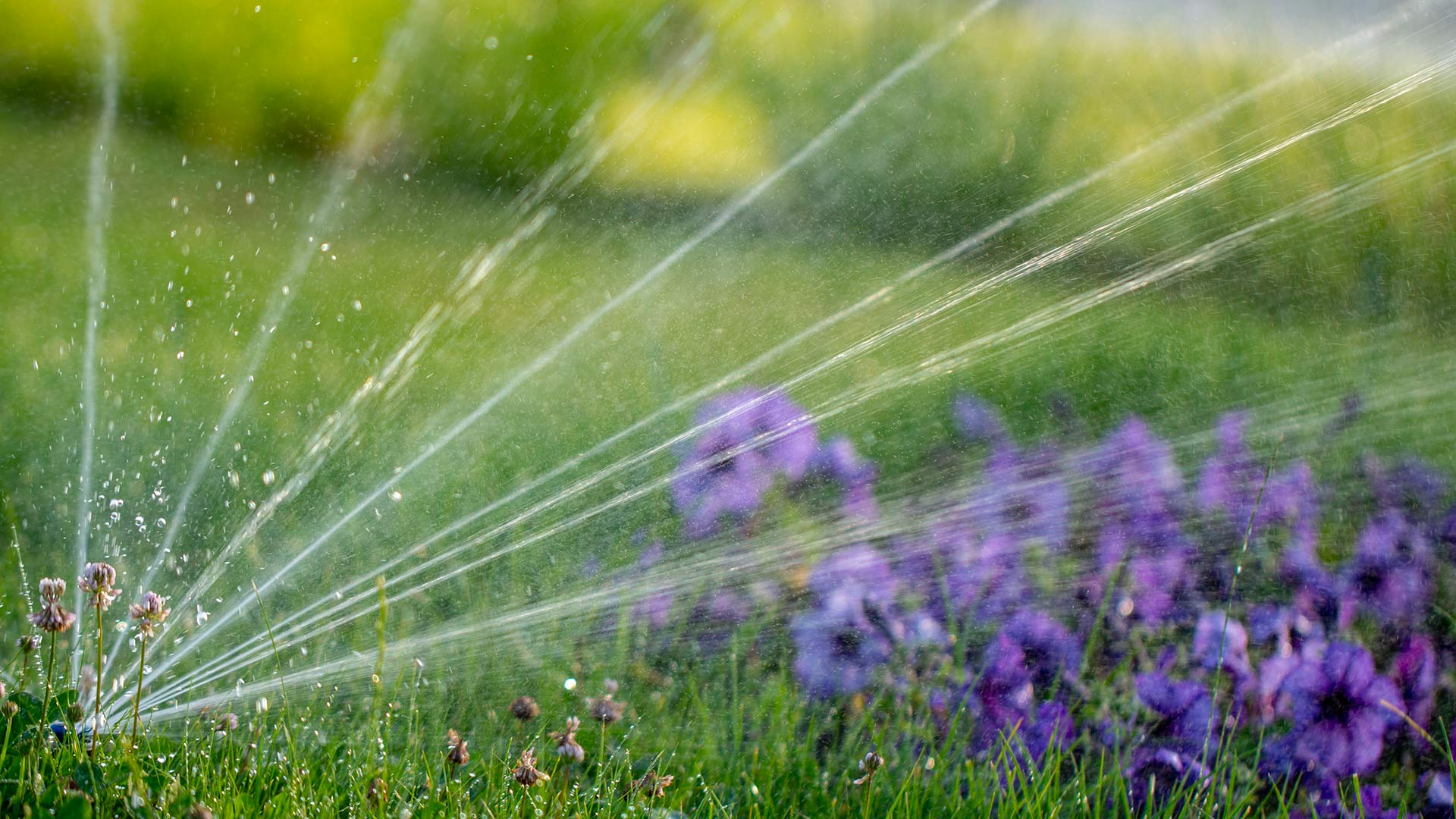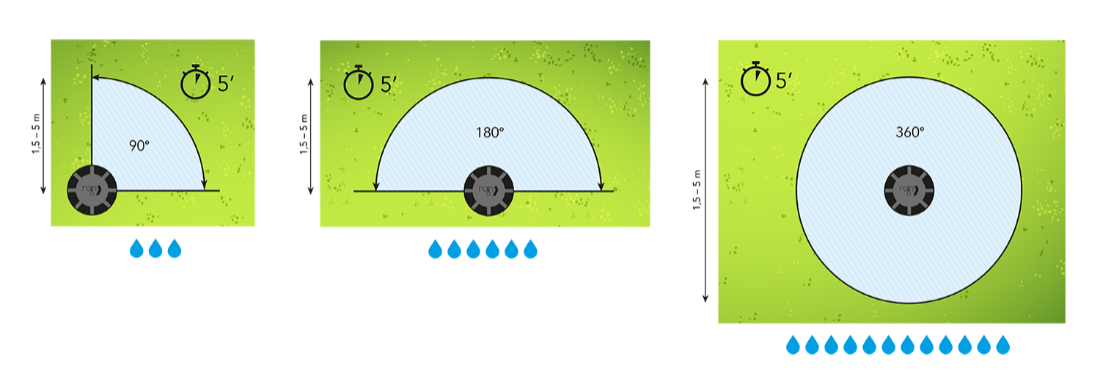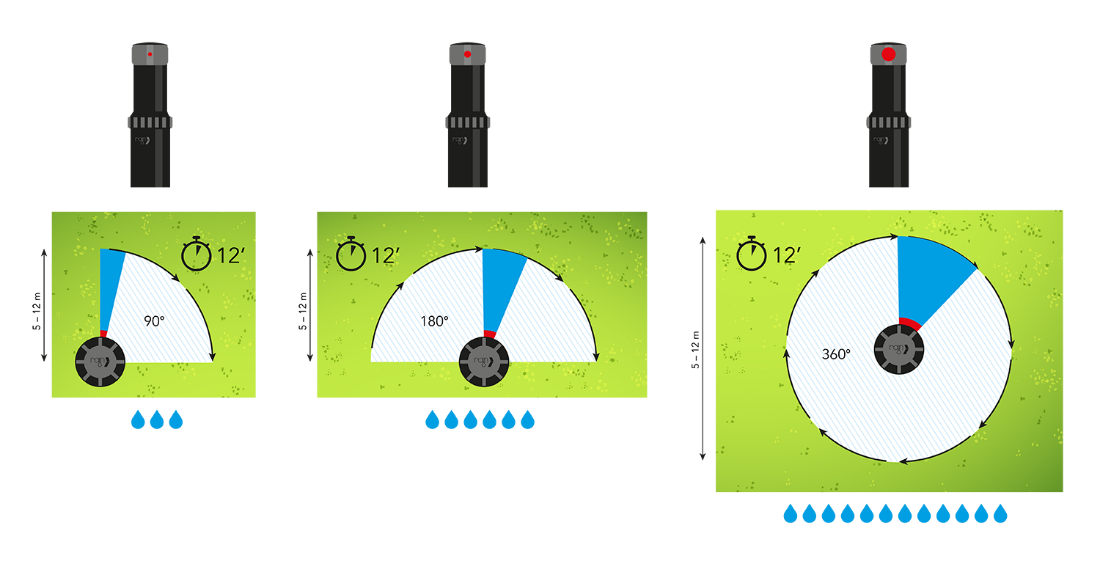
Blog
Which sprinkler do I choose for my garden? Differences and advantages between sprinklers, rotors and low-power sprinklers
14 September 2023
Choosing the right type of sprinkler for your lawn can be confusing, especially if the person making this choice has little experience in this area. We want your lawn to be healthy and beautiful at all times. For this reason, we have prepared a comprehensive guide to illustrate the key differences between the main sprinkler categories available on the market, highlighting their advantages and providing useful tips to help you select the one that perfectly suits your needs.
The first crucial element to take into account when choosing between a spray head and a rotating sprinkler concerns technical aspects. It is essential to understand the distinctions between them in terms of performance and mode of operation. Initially, it is essential to be familiar with the size of the area to be irrigated, as the decision between a spray head and a rotor depends mainly on the distance to be covered.
Spray heads are ideal for covering short distances between 1.5 and approx. 5 metres and are perfect for gardens where the shortest side does not exceed 5 metres. A distinguishing feature of spray heads is their water consumption, which increases as you widen the opening angle and, consequently, the irrigated area increases. For example, if you place a spray head on a corner of your garden with an opening angle of 90°, it will consume half as much water as another sprinkler placed on a side covering a 180° portion. In general, areas irrigated with spray heads require watering times of only a few minutes, usually between 5 and 8.

Rotors are designed to cover longer distances. In a residential context, they are ideal for irrigating areas with a shorter side ranging from 5 to about 12 metres, therefore, the shortest side of your garden should be at least 5 metres. Unlike static sprinklers, the water jets of the rotors, and therefore consumption, remain constant during the irrigation cycle, regardless of the angle of operation. This means that a rotating sprinkler positioned on a corner of the garden covering a 90° angle will consume the same amount of water as one positioned on the side of the garden covering a 180° angle. However, this uniformity can cause an uneven distribution of water, because the first sprinkler at the end of 90° will turn back and cover the already irrigated area again. In conclusion, the area irrigated at 90° will receive twice as much water as the area irrigated at 180°.
The solution to ensure even water distribution and maintain consistent watering times between sectors is to replace the sprinkler nozzle set at a larger angle with a larger nozzle, so that the volume of water delivered increases in proportion to the watering angle. This will help maintain an even watering duration for all sprinklers in the same area of the garden, ensuring an even distribution of water throughout the lawn, similar to a regular rainfall.

“What about low-power sprinklers?” you may be wondering.
The third category concerns low-power sprinklers, sometimes known as multi-jet sprinklers. These sprinklers are known to use a limited amount of water due to their technology, which reduces the number of irrigated sectors. They cover distances of approximately 2.5 to 9 metres and their standard watering times usually range from 22 to 26 minutes. This results in lower water consumption, helping to reduce your water bill (and save your budget!). As we explain in the K-Rotary dedicated article, these are the perfect sprinklers for those who want are interested in sustainable irrigation.
In addition to the size of your garden, it is also important to consider system pressure before choosing the right type of sprinkler:
- Spray heads require less pressure, with a minimum of 1 bar (pressure measured at the sprinkler inlet).
- Rotors require more pressure, which varies depending on the nozzle, with a minimum of 2 bar (pressure measured at the sprinkler inlet).
- For low-pressure sprinklers, the ideal pressure is at least 2 bar, measured at the sprinkler inlet.
Finally, in order to set watering times according to the needs of your lawn, we recommend that you always consult the precipitation data in millimetres per litre on the data sheets of your sprinklers. This will help you ensure effective and appropriate irrigation for your lawn.
Discover the latest innovations
in irrigation systems!